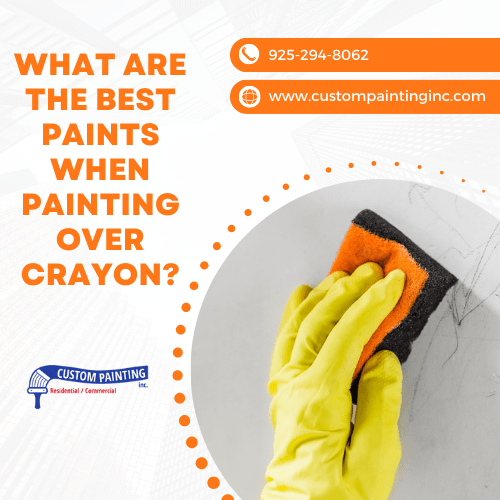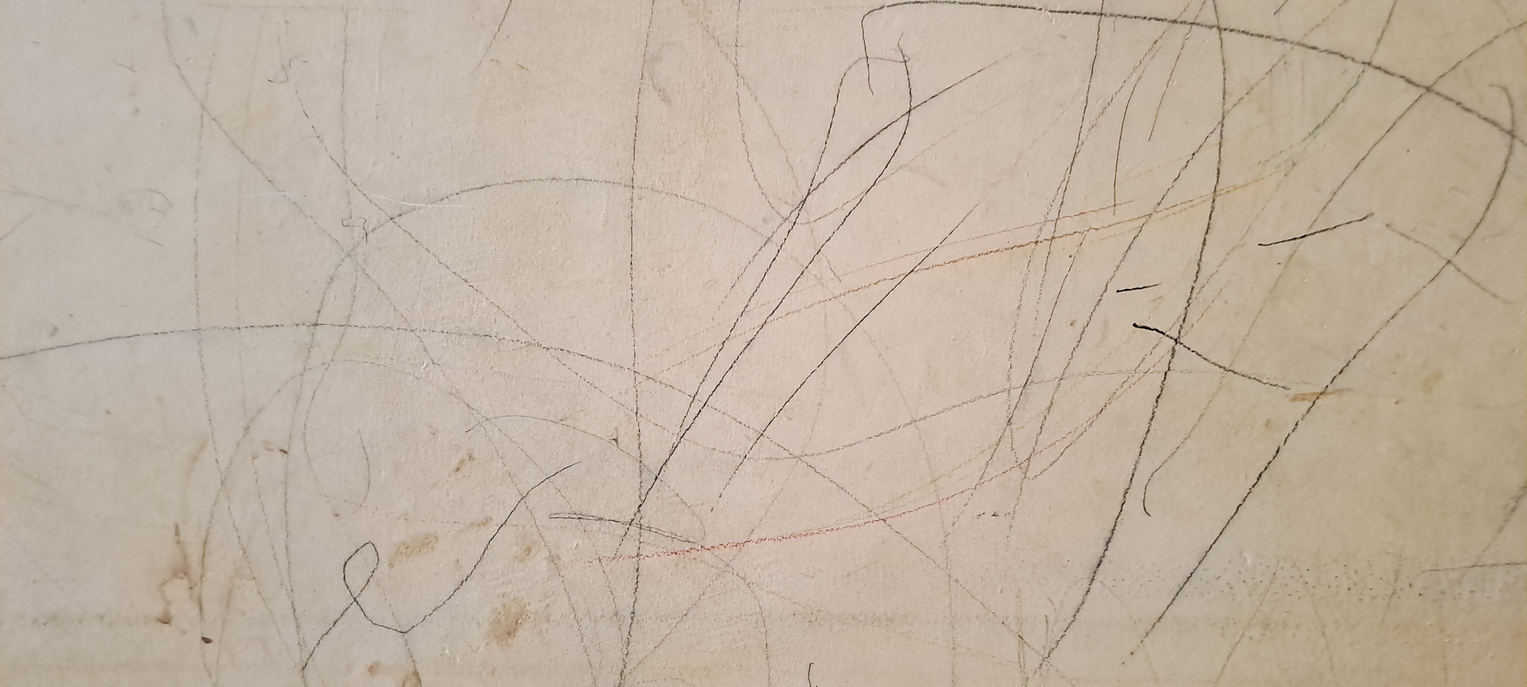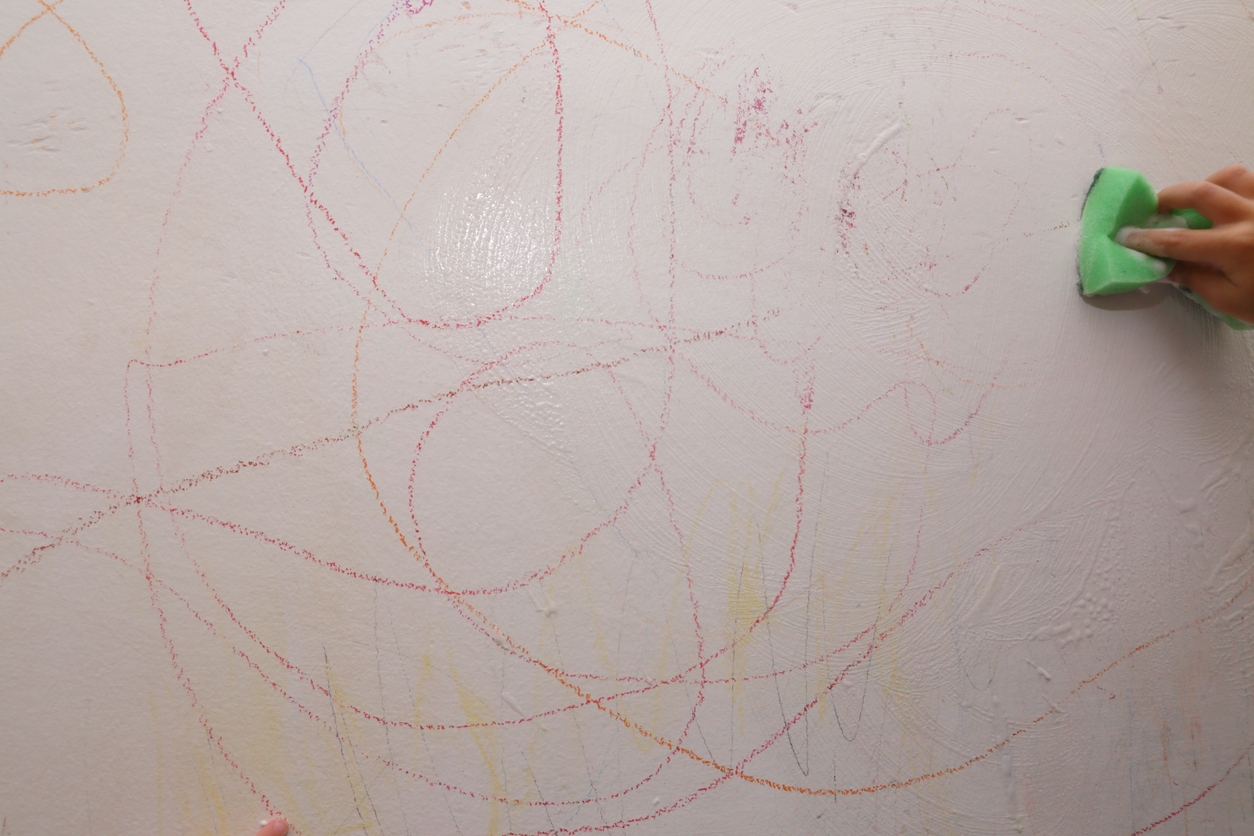If you’ve ever discovered your child’s crayon masterpiece on your freshly painted walls, you know the frustration of covering it up. Unfortunately, crayon marks aren’t easy to paint over due to their waxy nature, which resists paint.
But don’t worry—there are effective ways to prep your walls before painting to ensure a smooth, flawless finish. We’ll walk you through the best methods to remove crayon marks and recommend the right paints to use so your walls can look brand new again.
Why Crayon is Hard to Paint Over
Crayons might seem harmless, but when it comes to painting over them, they present a unique challenge. This is because crayons are made of wax, which creates a “wax-resist” effect. Essentially, the wax prevents the paint from sticking properly to the wall, causing the crayon marks to bleed through even after multiple coats.
Many people think they can simply paint over crayon marks, but this often leads to frustration when the marks reappear after the paint dries, especially if you’re dealing with light-colored walls. It’s important to understand that without proper surface preparation, the paint will struggle to cover the waxy residue effectively.
Crayon Removal Techniques
Luckily, there are ways to remove crayon marks on the surface when you are house painting. Surprisingly, the materials are easy to get, and many of them can be found just inside your home.
1. WD-40
WD-40 is an automotive lubricant often called “the miracle fluid” because it has so many uses, including removing stains. It can also break down stubborn crayon marks.
How to Use:
- Spray a small amount of WD-40 onto a clean cloth.
- Gently wipe the crayon marks with the cloth.
- For tough stains, spray WD-40 directly on the crayon marks and let it sit for a few minutes.
- Wipe off the area with a clean, damp cloth to remove any residue.
2. Magic Eraser
Magic Erasers are specially designed cleaning pads that easily remove crayon marks. Just dampen the eraser and gently scrub the wall. These erasers are effective but can be slightly abrasive, so use them carefully to avoid damaging the paint.
How to Use:
- Dampen the Magic Eraser with water.
- Gently scrub the crayon marks using light pressure.
- Wipe the area with a clean, damp cloth to remove any residue.
3. Rubbing Alcohol
Rubbing alcohol is great for breaking down crayon wax. This method works well for older or more stubborn stains.
How to Use:
- Pour a small amount of rubbing alcohol onto a cotton ball or cloth.
- Gently rub the crayon marks in a circular motion.
- Wipe the area with a damp cloth to remove any remaining alcohol and residue.
4. Heat Gun or Hair Dryer
Gently heating the crayon marks with a heat gun or hair dryer can soften the wax, making it easier to wipe off.
How to Use:
- Set the heat gun or hair dryer to a low setting.
- Hold it a few inches away from the crayon marks and heat the area until the wax softens. Be cautious with the heat to avoid damaging the paint.
- Use a cloth to wipe off the softened crayon.
- Clean the area with a damp cloth to remove any leftover residue.
5. Baking Soda
You’re probably aware of a few household cleaning hacks that involve baking soda. Thankfully, this handy kitchen staple can also help in this situation. Baking soda is a mild abrasive that helps scrub away crayon without damaging the paint.
How to Use:
- Dampen a cloth or sponge with water.
- Sprinkle a small amount of baking soda onto the cloth.
- Gently rub the crayon marks in a circular motion.
- Wipe the area with a clean, damp cloth to remove any residue.
6. Toothpaste
You can also try using your toothpaste for your walls. Non-gel toothpaste contains mild abrasives that help lift crayon wax from the wall.
How to Use:
- Squeeze a small amount of regular, non-gel toothpaste directly onto the crayon marks.
- Use a cloth or sponge to gently scrub the area in a circular motion.
- Rinse the wall with a damp cloth to remove the toothpaste and crayon residue.
7. Vinegar Solution
Vinegar is an all-around cleaning solution for the house. It is with crayons because it cuts through the oil in wax, making it easier to remove.
How to Use:
- Pour undiluted vinegar into a bowl.
- Soak an old toothbrush in vinegar.
- Gently scrub the crayon marks with the toothbrush.
- Wipe the area clean with a damp cloth.
8. Mayonnaise
It might sound odd, but mayonnaise can help dissolve crayon wax. The oil content in mayonnaise works against the wax in crayons, lifting the marks off the walls.
How to Use:
- Apply a small amount of mayonnaise directly to the crayon marks.
- Let it sit for 5-10 minutes to soften the wax.
- Wipe off the mayonnaise and crayon with a clean cloth.
- Rinse the area with a damp cloth to remove any oily residue.
9. Steel Wool and Erasers
Steel wool and pencil erasers are abrasive enough to remove crayon marks but require a gentle touch.
How to Use:
- For steel wool, use the finest grade available. Lightly skim the surface in straight strokes, avoiding heavy pressure to prevent paint damage.
- For pencil erasers, simply rub the crayon marks until they disappear. Clean off any eraser residue with a soft cloth.
Each method can effectively remove crayon marks, leaving your walls ready for a fresh coat of paint. Just be sure to test a small, inconspicuous area first to ensure you don’t damage the wall’s surface.
Preparing the Surface Before Painting
After successfully removing crayon marks, preparing the wall properly before you start painting is crucial. This ensures that your new paint job looks smooth and flawless. Here’s what you should do:
1. Checking for Residue
After cleaning, it’s essential to ensure no waxy or oily residue remains. Run your hand over the wall; if it feels slick or you see shiny spots, there’s still residue. A damp cloth wipe can also reveal any lingering marks that need more attention.
2. Using Primer
Use a high-quality primer to prevent crayon marks from reappearing. Opt for a latex primer for walls with latex paint. If your walls have oil-based paint, choose an oil-based primer. These primers will seal in any remaining stains and provide a solid base for your paint.
3. Sanding and Patching
If you accidentally damage the wall while cleaning, don’t worry. Lightly sand the area to smooth it out. If there are any deeper scratches or holes, use a spackling paste or drywall compound to fill them in. After it dries, sand it smooth again. This will ensure your wall is perfectly even and ready for painting.
Taking these extra steps ensures that your walls will look flawless once you’ve finished painting, giving your room a fresh and professional finish.
Choosing the Right Paint for Best Results
With your wall prepped and ready, the next step is selecting the right paint. The type of paint you choose will significantly impact how well it covers the old crayon marks and how durable the finish will be. Let’s explore the best options:
1. Oil-Based Paints
Oil-based paints are tough and durable, making them excellent for covering crayon marks. They adhere well to surfaces, providing a smooth finish that resists future staining. However, they can take longer to dry and have a stronger odor, so good ventilation is a must.
2. Stain-Blocking Paints
Stain-blocking paints are specially formulated to cover tough stains like crayon marks, water damage, or smoke stains. These paints contain strong pigments that prevent old marks from bleeding through, ensuring your new paint job stays clean and bright.
3. Latex Paints
Latex paints are popular due to their ease of use and quick drying time. When choosing latex paint, choose a high-quality brand with good coverage. These paints are also low in odor and easy to clean up, making them ideal for homes with children or pets.
4. Crayon-Resistant Paints
Some paints are designed to resist crayons and other tough stains. These paints create a barrier that makes it harder for marks to stick and easier to clean up if they do. This is a great option for areas where children frequently play.
5. Semi-Gloss and Gloss Finishes
Paints with a semi-gloss or gloss finish are more resistant to stains and easier to clean. While they may show imperfections more easily, they are a good choice for high-traffic areas where walls need to be cleaned frequently.
Preventative Measure: Washable Wall Coatings
Once you’ve cleaned and repainted your walls, it’s natural to want to keep them looking fresh. Washable wall coatings are a great solution. These provide an extra layer of protection, allowing you to easily wipe away crayon marks and other stains with just a damp cloth. They can be applied over your existing paint, offering a convenient way to keep your walls looking pristine without constant repainting.
Conclusion
Proper preparation and choosing the right paint make all the difference when it comes to painting over crayon marks. By thoroughly cleaning the walls, using the right primers, and selecting high-quality paints, you can restore your wall to its original condition and make it look like nothing happened.
But sometimes, these projects can be tricky, and that’s where professional help comes in. If you want to ensure your walls look perfect, contact Custom Painting, Inc. Our experts are here to handle even the most challenging painting projects with care and precision. Call us at 925-866-9610 or fill out our contact form to schedule an appointment.




